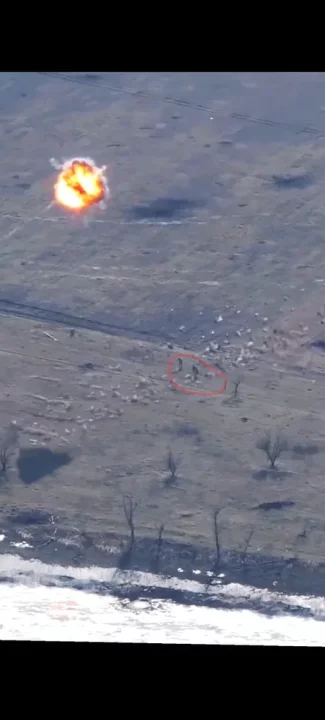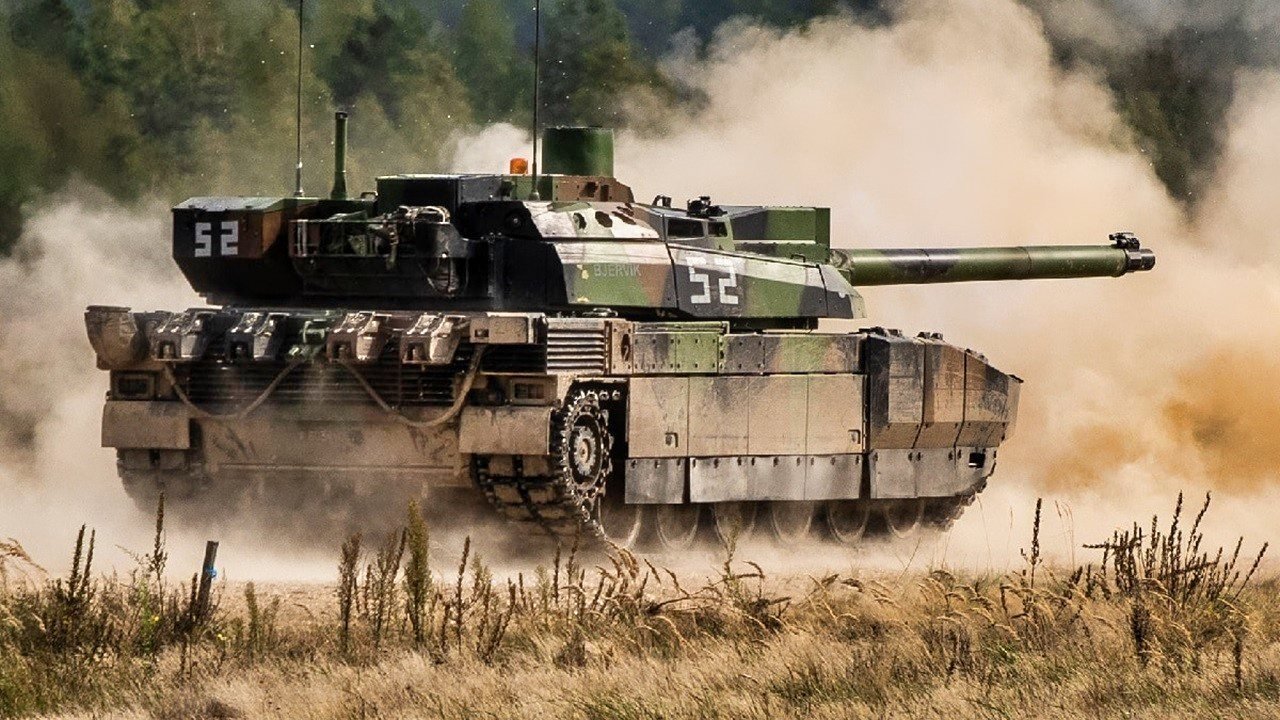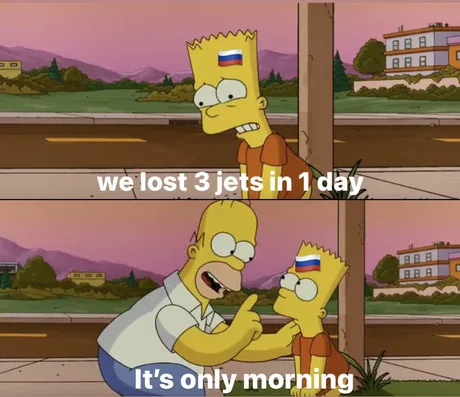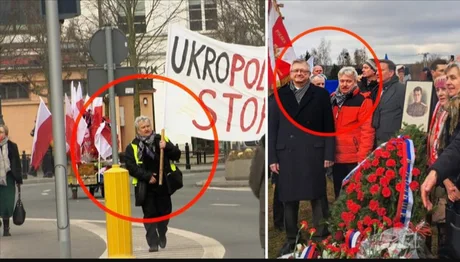-
Innlegg
12 306 -
Ble med
-
Besøkte siden sist
-
Dager vunnet
364
Innholdstype
Profiler
Forum
Hendelser
Blogger
Om forumet
Alt skrevet av Brother Ursus
-
https://www.forbes.com/sites/davidaxe/2024/02/29/shooting-down-11-russian-jets-in-11-days-ukraine-nudges-the-russian-air-force-closer-to-an-organizational-death-spiral/ Shooting Down 11 Jets In 11 Days, Ukraine Nudges The Russian Air Force Closer To Organizational Death-Spiral The Russian air force lost another Sukhoi Su-34 fighter-bomber on Thursday, the Ukrainian air force claimed. If confirmed, the Thursday shoot-down would extend an unprecedented hot streak for Ukrainian air-defenses. The Ukrainian claim they’ve shoot down 11 Russian planes in 11 days: seven Su-34s, two Sukhoi Su-35 fighters and two rare Beriev A-50 radar planes. But those 11 claimed losses are worse than they might seem for the increasingly stressed Russian air force. In theory, the air arm has plenty more planes. In practice, the service is dangerously close to collapse. Exactly how the Ukrainians are shooting down so many jets is unclear. It’s possible the Ukrainian air force has assigned some of its American-made Patriot missile launchers to mobile air-defense groups that move quickly in close proximity to the 600-mile front line of Russia’s two-year wider war on Ukraine, ambushing Russian jets with 90-mile-range PAC-2 missiles then swiftly relocating to avoid counterattack. But the distance at which the Ukrainians shot down that A-50 on Friday—120 miles or so—hints that a longer-range missile system was involved. Perhaps a Cold War-vintage S-200 that the Ukrainian air force pulled out of long-term storage. It also is apparent the Ukrainians have moved some of their two-dozen or so 25-mile-range NASAMS surface-to-air missile batteries closer to the front line. After all, the Russians found—and destroyed with a missile—their first NASAMS launcher near the southern city of Zaporizhzhia on or before Monday. It’s possible Russian forces’ own actions have contributed to the spike in aviation losses. After finally defeating, at incredible cost in people and equipment, the ammo-starved Ukrainian garrison in the ruins of Avdiivka in eastern Ukraine two weeks ago, the Russian army in Ukraine is advancing against other Ukrainian garrisons that also are running out of ammo—all thanks to Russia-aligned Republicans in the U.S. Congress, who have been blocking further U.S. aid to Ukraine since October. Sensing an opportunity, the Russian air force is flying more sorties, closer to the front line, lobbing glide-bombs to suppress Ukrainian troops. “The enemy has overcome the fear of using aviation directly over the battlefield,” the Ukrainian Center for Defense Strategies explained, “and although this results in the loss of aircraft, their ground forces gain a significant firepower advantage.” This surge in Russian sorties presents Ukrainian air-defenders with more targets. So of course they’re shooting down more Russian planes. It helps the Ukrainian effort that Russian pilots increasingly are blind to Ukrainian missile-launches. The Russian air force once counted on its nine or so active A-50 radar planes—organized into three, three-plane “orbits” in the south, east and north—to extend sensor coverage across Ukraine. In damaging one A-50 in a drone strike last year and shooting down two more A-50s this year, the Ukrainians have eliminated a third of this sensor coverage, and created blind spots where Russian pilots might struggle to spot approaching missiles. In any event, the consequences of the Ukrainians’ recent kills, for the Russians, are dire. The Russian air force is losing warplanes far, far faster than it can afford to lose them. Russia’s sanctions-throttled aerospace industry is struggling to build more than a couple of dozen new planes a year. Escalating losses, exacerbated by anemic plane-production, almost certainly are increasing the stress on the surviving planes and crews. The Russian air arm isn’t yet in an organizational death spiral. But it’s getting closer. The numbers tell the story. On paper, the Russian air force has acquired 140 of the twin-engine, two-seat, supersonic Su-34s. Counting this year’s unconfirmed losses, the air force has lost 31 of the Su-34s. But 109 Su-34s still is a lot of Su-34s, right? Wrong, according to Michael Bohnert, an engineer with the RAND Corporation in California. Shoot-downs represent “only a portion of total losses” of Russian fighters, Bohnert wrote back in August. “Overuse of these aircraft is also costing Russia as the war drags on.” “In a protracted war, where one force tries to exhaust the other, it's the total longevity of the military force that matters,” Bohnert added. “And that's where the VKS”—the Russian air force—“finds itself now.” Bohnert assumed the air force went to war two years ago with around 900 fighters and attack planes and, in the first 18 months of fighting, lost around 100 of them to Ukrainian action. The problem for the Russians—besides the losses—is that the requirement for fighter and attack sorties hasn’t decreased even as the fighter and attack inventory has decreased. So those 800 remaining planes are flying more frequently in order to handle taskings the Kremlin once assigned to 900 planes. And that means more wear and tear, deepening maintenance needs and a growing hunger for increasingly hard-to-find spare parts—imperatives that effectively remove airframes from the front-line force. Det er nå 13 på 12 dager Og ja, Russland har mange fly, men det er et åpent spørsmål hvor mange som er flygedyktige, og hvor mange piloter de har. Personlig er jeg svært ubekymret over at russerne har ødelagt en NASAMS-utskytningsrampe. Det ble antagelig gjort med artilleri. Som vil si at NASAMS står heeeelt ved fronten og antagelig er med på å skyte ned russiske fly.
- 71 353 svar
-
- 10
-

-

-

-
https://newsukraine.rbc.ua/news/argentine-president-plans-to-hold-latin-america-1709191902.html Argentine President plans to hold Latin America support summit for Ukraine Argentina's President Javier Milei says he plans to hold a Latin American support summit for Ukraine later this year, according to the Financial Times. The agency notes that Milei's plans sharply distinguish him from other regional leaders, such as Brazilian Luiz Inácio Lula da Silva and Mexican Andrés Manuel López Obrador, who take a more neutral position on Russia's war against Ukraine.
- 71 353 svar
-
- 13
-

-

-

-
https://www.disneyplus.com/nb-no?CID=DSS-Social-FBIG-120206584573840589-120206584574220589-120206584574060589&fbclid=IwAR0T5GH9lHqOTPNDWBAkM50qbqsCiqJ7NHS5__aCk2bApulhQCxGgyw3sG8 For den som vil se Shogun og andre ting. Tilbud på Disney+ nå. 19kr per måned i 3 måneder. Gjelder bare standard-abbonoment med reklame dog. Men jeg tenker jeg prøver meg.
-
https://www.dailymail.co.uk/news/article-13138853/Germany-accused-abusing-intelligence-revealing-British-troops-helping-Ukraine-fire-missiles-Putins-forces.html Germany is accused of being 'completely irresponsible' after claiming British troops are helping Ukraine to fire missiles at Putin's forces Germany has been accused of a 'flagrant abuse of intelligence' after Chancellor Olaf Scholz claimed British troops are helping Ukraine launch long-range missiles at Putin's forces. Scholz said on Monday that he would not deliver German-made long-range missiles as it would require German troops to assist on the ground, arguing that following the UK's lead would make his nation a 'participant in the war.' He said that delivering Taurus weapons systems would bring German troops too close to the front lines of Russia's invasion of Ukraine.
-
Polen er i ferd med å bli Europas råeste militærmakt. Og makten i EU og NATO kan skifte østover.
- 71 353 svar
-
- 11
-

-

-
Det er snakk om å opprette et felleseuropeisk forsvarsfond for å investere i europeiske forsvarsselskaper, ammunisjonsprodusenter og nye kapabiliteter. Noe av dette vil nok også dryppe på Norge. En god tid for å investere i Kongsberg og NAMMO antagelig.
- 71 353 svar
-
- 12
-

-

-
Frankrike sender 3000 soldater og 50 Leclerc stridsvogner til Romania. Planene har ligget på bordet en stund, for å øke NATOs kontigent i Romania fra bataljon til brigade, men gjør nok Kreml nervøse for at dette kan være en forberedelse til å sende tropper inn i Ukraina. Kanskje også et mottrekk mot Transnistria i Moldova?
- 71 353 svar
-
- 13
-

-

-

-
https://economictimes.indiatimes.com/news/defence/china-urges-largest-nuclear-states-to-negotiate-a-no-first-use-treaty/articleshow/108056379.cms China urges largest nuclear states to negotiate a 'no-first-use' treaty States with the largest nuclear arsenals should negotiate a treaty on no-first-use of nuclear weapons against each other or make a political statement in this regard, the Chinese foreign ministry's arms control department said. Kudos til Kina for å gjøre noe potensielt nyttig for én gangs skyld. Det er sikkert ikke tilfeldig at Kina har det minste atomvåpenarsenalet, og få eller ingen taktiske våpen. Og de ville sikkert vært de første til å bryte avtalen. Men likevel.
- 71 353 svar
-
- 11
-

-

-
Under første verdenskrig produserte det britiske imperiet totalt drøyt 170 millioner granater på 3,5 år. Noe slikt som 11 milliarder kilo granater ble brukt under andre verdenskrig. En typisk granat veide noen titalls kilo opptil noen få hundre kilo for krigsskip. Altså flere hundre millioner artillerigranater. Vi har strengere krav til kvalitet hundre år etterpå men det virker som om nesten all produksjon av krigsmateriell og tom. ammunisjon er basert på tanken om at enhver krig vil være over i løpet av kort tid.
-
Du sier noe. Fra før av var det allerede svært mange russiske og ukrainske kvinner som så mot Vest pga. levestandard og at det var fler kvinner enn det var menn i disse landene. Nå blir det enda større skjevfordeling i fremtiden. Ikke minst fordi så mange mannfolk som du sier også er alkoholiserte... og nå i tillegg vil ha traumer, både fysiske og psykiske. Kina trenger fler kvinner, og noen har forsøkt å koble kinesiske menn med russiske kvinner, men det spørs mtp. at den kinesiske økonomien nå går dårligere og kulturelle forskjeller tross alt. Personlig tror jeg neppe jeg noensinne kunne datet' en russisk kvinne med mindre hun hatet Putin og krigen og tok sterk avstand fra dem, i det minste privat.
-
Det er nok bare enda et forsøk på å spre kaos og lede oppmerksomhet vekk fra tapene og mangelen på fremgang i Ukraina. De russiske styrkene i Transnistria står stort sett stille og får ikke gjort noe fornuftig. Dersom ukrainerne må sette av fler styrker til å sikre den vestre flanken og Odesa osv. og den siden, så er nok det til Russlands vinning.
-
Litt morro er det at det lett kunne vært ungått ved at man hadde kalt det noe annet, eller hatt det gående på invitasjon eller andre kriterier, slik andre grupper gjør det i Vesten for å ha private eller etnisk ekskluderende arrangement, men neida, russerne fornekter seg ikke, selv når de er i et land hvor folk ikke er hvite. Vi får også tro at dette er eksilrussere, eller såkalt "gode russere", som har flyktet Russland. Men eplet faller ikke langt fra stammen, gitt
-
https://www.ft.com/content/f18e6e1f-5c3d-4554-aee5-50a730b306b7 Leaked Russian military files reveal criteria for nuclear strike Vladimir Putin’s forces have rehearsed using tactical nuclear weapons at an early stage of conflict with a major world power, according to leaked Russian military files that include training scenarios for an invasion by China. The classified papers, seen by the Financial Times, describe a threshold for using tactical nuclear weapons that is lower than Russia has ever publicly admitted, according to experts who reviewed and verified the documents. The cache consists of 29 secret Russian military files drawn up between 2008 and 2014, including scenarios for war-gaming and presentations for naval officers, which discuss operating principles for the use of nuclear weapons. Criteria for a potential nuclear response range from an enemy incursion on Russian territory to more specific triggers, such as the destruction of 20 per cent of Russia’s strategic ballistic missile submarines. “This is the first time that we have seen documents like this reported in the public domain,” said Alexander Gabuev, director of the Carnegie Russia Eurasia Center in Berlin. “They show that the operational threshold for using nuclear weapons is pretty low if the desired result can’t be achieved through conventional means.” Russia’s tactical nuclear weapons, which can be delivered by land or sea-launched missiles or from aircraft, are designed for limited battlefield use in Europe and Asia, as opposed to the larger “strategic” weapons intended to target the US. Modern tactical warheads can still release significantly more energy than the weapons dropped on Nagasaki and Hiroshima in 1945. Although the files date back 10 years and more, experts claim they remain relevant to current Russian military doctrine. The documents were shown to the FT by western sources. The defensive plans expose deeply held suspicions of China among Moscow’s security elite even as Putin began forging an alliance with Beijing, which as early as 2001 included a nuclear no-first-strike agreement. In the years since, Russia and China have deepened their partnership, particularly since Xi Jinping took power in Beijing in 2012. The war in Ukraine has cemented Russia’s status as a junior partner in their relationship, with China throwing Moscow a vital economic lifeline to help stave off western sanctions. Yet even as the countries became closer, the training materials show Russia’s eastern military district was rehearsing multiple scenarios depicting a Chinese invasion. The exercises offer a rare insight into how Russia views its nuclear arsenal as a cornerstone of its defence policy — and how it trains forces to be able to carry out a nuclear first strike in some battlefield conditions. One exercise outlining a hypothetical attack by China notes that Russia, dubbed the “Northern Federation” for the purpose of the war game, could respond with a tactical nuclear strike in order to stop “the South” from advancing with a second wave of invading forces. “The order has been given by the commander-in-chief . . . to use nuclear weapons . . . in the event the enemy deploys second-echelon units and the South threatens to attack further in the direction of the main strike,” the document said. China’s foreign ministry denied there were any grounds for suspicion of Moscow. “The Treaty of Good-Neighborliness, Friendship and Cooperation between China and Russia has legally established the concept of eternal friendship and non-enmity between the two countries,” a spokesperson said. “The ‘threat theory’ has no market in China and Russia.” The Kremlin did not respond to a request for comment. A separate training presentation for naval officers, unrelated to the China war games, outlines broader criteria for a potential nuclear strike, including an enemy landing on Russian territory, the defeat of units responsible for securing border areas, or an imminent enemy attack using conventional weapons. The slides summarise the threshold as a combination of factors where losses suffered by Russian forces “would irrevocably lead to their failure to stop major enemy aggression”, a “critical situation for the state security of Russia”. Other potential conditions include the destruction of 20 per cent of Russia’s strategic ballistic missile submarines, 30 per cent of its nuclear-powered attack submarines, three or more cruisers, three airfields, or a simultaneous hit on main and reserve coastal command centres. Russia’s military is also expected to be able to use tactical nuclear weapons for a broad array of goals, including “containing states from using aggression […] or escalating military conflicts”, “stopping aggression”, preventing Russian forces from losing battles or territory, and making Russia’s navy “more effective”. Putin said last June that he felt “negatively” about using tactical nuclear strikes, but then boasted that Russia had a larger non-strategic arsenal than Nato countries. “Screw them, you know, as people say,” Putin said. The US has estimated Russia has at least 2,000 such weapons. Putin said last year that Russian nuclear doctrine allowed two possible thresholds for using nuclear weapons: retaliation against a first nuclear strike by an enemy, and if “the very existence of Russia as a state comes under threat even if conventional weapons are used”. But Putin himself added that neither criteria was likely to be met, and dismissed public calls from hardliners to lower the threshold. The materials are aimed at training Russian units for situations in which the country might want the ability to use nuclear weapons, said Jack Watling, a senior research fellow for land warfare at the Royal United Services Institute, rather than setting out a rulebook for their use. “At this level, the requirement is for units to maintain — over the course of a conflict — the credible option for policymakers to employ nuclear weapons,” Watling added. “This would be a political decision.” While Moscow has drawn close to Beijing since the war games and moved forces from the east to Ukraine, it has continued to build up its eastern defences. “Russia is continuing to reinforce and exercise its nuclear-capable missiles in the Far East near its border with China,” said William Alberque, director of strategy, technology and arms control at the International Institute for Strategic Studies. “A lot of these systems only have the range to strike China.” Russia was still behaving in accordance with the “theory of use” of nuclear weapons set out in the documents, Alberque said. “We have not seen a fundamental rethink,” he said, adding that Russia is probably concerned that China may seek to take advantage of Moscow being distracted “to push the Russians out of Central Asia”. The documents reflect patterns seen in exercises the Russian military held regularly before and since Putin’s invasion of Ukraine in 2022. Alberque, who previously worked for Nato and the US defence department on arms control, pointed to examples of Russian exercises held in June and November last year using nuclear-capable Iskander missiles in two regions bordering China. While Russia’s president has the sole authority to launch a first nuclear strike, the low threshold for tactical nuclear use set out in the documents conforms with a doctrine some western observers refer to as “escalating to de-escalate”. Under this strategy a tactical weapon could be used to try to prevent Russia from becoming embroiled in a sprawling war, particularly one in which the US might intervene. Using what it calls “fear inducement”, Moscow would seek to end the conflict on its own terms by shocking the country’s adversary with the early use of a small nuclear weapon — or securing a settlement through the threat to do so. “They talk about ‘soberising’ their adversaries — knocking them out of the drunkenness of their early victories by introducing nuclear weapons,” said Alberque. “The best way that they think they can do that is to use what they call a lower ‘dosage’ of nuclear weapons at a much lower level of combat to prevent escalation.” Ukrainian officials argued that Putin’s nuclear threats convinced US and other allies not to arm Kyiv more decisively early in the conflict, when advanced Nato weaponry could have turned the tide in Ukraine’s favour. Alberque said Russia would probably have a higher threshold for using tactical nuclear weapons against Ukraine, which does not have its own nuclear capability or the ability to launch a ground invasion on the same scale, than against China or the US. Russian leaders believe that, whereas a nuclear strike against China or the US could be “soberising”, a nuclear strike on Ukraine would be likely to escalate the conflict and lead to direct intervention by the US or UK, Alberque said. “That is absolutely the last thing Putin wants.” Jeg tror dokumentene er ekte. Jeg tror også de er lekket med overlegg. Men av hvem og med hvilken motivasjon er ikke godt å si. Putin og Kreml vet utmerket godt at NATO ikke har noen planer om å angripe eller invandere. Lekkasjen gjentar at en invasjon av russisk territorium kan bli møtt med atomvåpen. Frykter russerne at Ukraina planlegger å gå nordover? (det er nemlig det jeg ville gjort) Eller er dette 5D-sjakk for å lette på trykket ift. NATO og Macrons uttalelse, betrygge usikre republikanere om at dette er en lokal konflikt mellom Russland og Ukraina, eller å legge press på Kina?
-
https://uk.news.yahoo.com/nato-crush-weak-russia-putin-184441233.html NATO would crush weak Russia and Putin knows it, says UK defence chief Britain’s top Armed Forces official has said the world is not on the brink of World War Three because Vladimir Putin knows Nato would beat Russia in any conflict. https://www.reuters.com/world/europe/west-must-help-ukraine-more-prevent-spillover-polish-fm-says-2024-02-26/ Poland warns US House speaker: you're to blame if Russia advances in Ukraine WASHINGTON, Feb 26 (Reuters) - Polish Foreign Minister Radoslaw Sikorski on Monday urged U.S. House Speaker Mike Johnson to allow a vote on new U.S. aid for Ukraine, saying Johnson would be to blame if the bill failed and Russia advances on the battlefield.
-
Mange polske bønder som også har sidejobb for den russiske ambassaden, gitt. Må være tøft jobbmarked i Polen om dagen.
- 71 353 svar
-
- 11
-

-

-
Nettopp. Det er samme problem vi har med Kina og enkelte andre autoritære land og folk. Vi er ikke i krig med Kina, men Kina er i krig med oss. Alt de gjør er å kjøpe tid før de vil forsøke å etablere seg som den nye verdenshegemon, eller i det minste, forsøke å ta kontroll over Asia og Stillehavet. Og de er mer enn villige til å gjøre det med makt. Det er en type tenkning vi i Vesten ikke lengre forstår.







